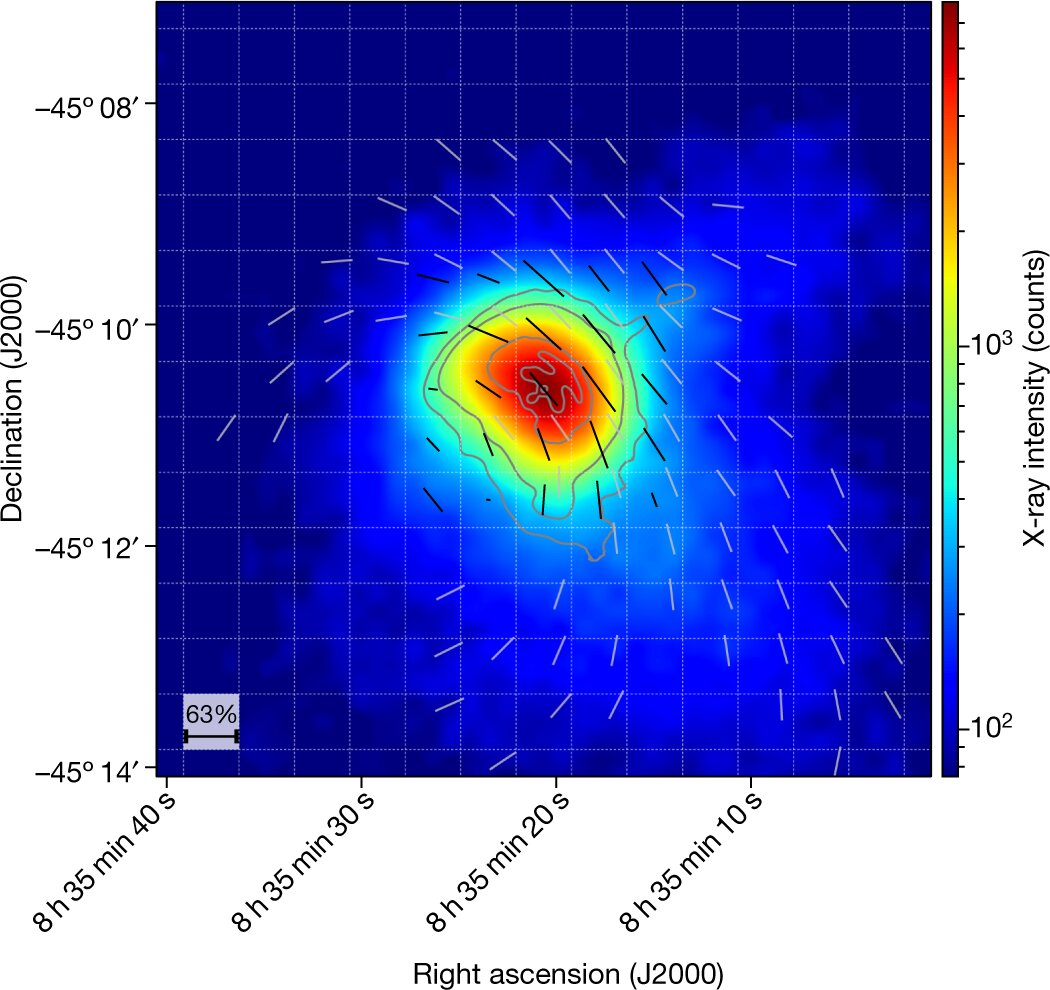The IXPE and Chandra X-ray observatories have obtained an image of a supernova remnant in the constellation Vela. It demonstrates a phenomenon known as pulsar wind.

The supernova remnant in the constellation Vela is located at a distance of about 800 light-years from Earth. It was formed about 10 thousand years ago as a result of the collapse of a giant star. This event led to the release of a huge amount of energy and the release of stellar matter. As for the surviving part of the core of the deceased luminary, it turned into a pulsar — a rapidly rotating neutron star, which is a source of periodic pulses of radiation.
Real “winds” of particles fly out from the surface of the pulsar. They move at near-light speeds, creating a chaotic mess of charged particles and magnetic fields that crash into the surrounding gas. This phenomenon is called a plerion (pulsar wind nebula).
In the image published by NASA, you can see a light blue halo surrounding the supernova remnant. It corresponds to the first-ever data on the polarization of its X-rays obtained by the IXPE Observatory. A pale blue fuzzy line pointing to the upper right corner corresponds to a jet of high-energy particles flying out of the pulsar at about half the speed of light.

Pink and purple colors correspond to the data of the Chandra X-ray Observatory. Pink X-ray “arcs” are thought to mark the edges of doughnut-shaped areas where pulsar wind shakes and accelerates high-energy particles. The pulsar itself is located in a white circle in the center of the image. Background stars were added from a picture taken by the Hubble telescope.
According to https://www.nasa.gov
Follow us on Twitter to get the most interesting space news in time
https://twitter.com/ust_magazine

